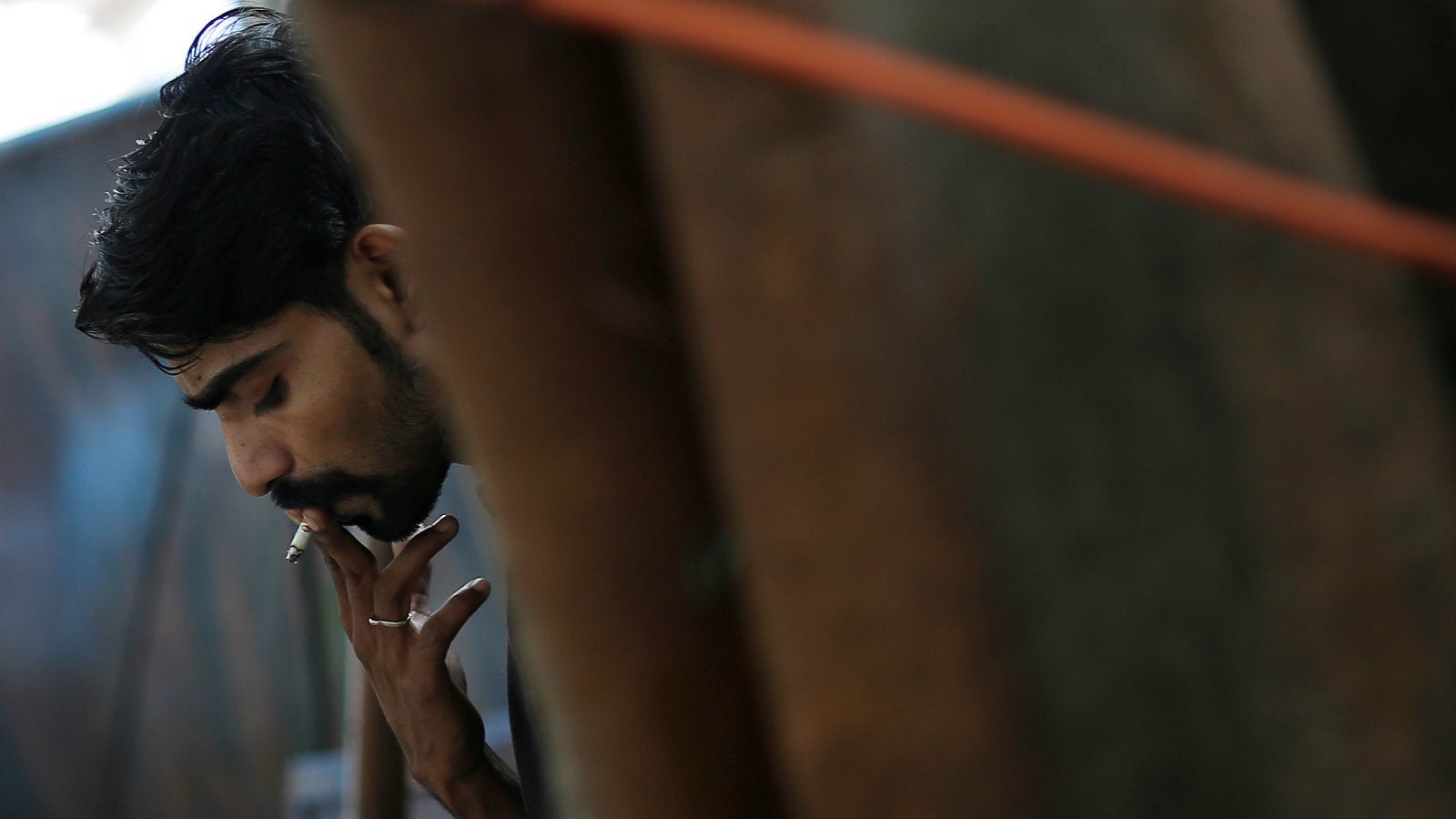India can’t eliminate tuberculosis by 2025 without curbing smoking
More people die of tuberculosis (TB) in India than anywhere else in the world.


More people die of tuberculosis (TB) in India than anywhere else in the world.
In 2016 alone, an estimated 423,000 Indians lost their lives to the infectious disease, accounting for nearly a third of global TB-related deaths, says the World Health Organisation’s 2017 global tuberculosis report (pdf).
There are a number of reasons for this, but the Indian government is going all out to target the main problems, notably delayed diagnosis and poor treatment. On March 13, prime minister Narendra Modi launched the TB-free India campaign, promising to eliminate the disease by 2025, five years sooner than the global target.
For this, however, his government will have to step up its efforts against one of the biggest causes of TB-related deaths in the country: tobacco use.
In India, 7.9% of TB-related deaths are caused by tobacco, according to new data from The Tobacco Atlas, a partnership between the American Cancer Society and the non-profit Vital Strategies, which measures the tobacco epidemic and its effects around the world. While India trails countries such as Russia (19.6%), Bangladesh (16.8%), and China (14.4%) in tobacco-related TB deaths, cigarettes and other tobacco products compound the problem in the country.
“A key barrier to timely diagnosis and treatment among smokers is the assumption that a cough is related to their smoking,” Nandita Murukutla, India office lead at Vital Strategies, told Quartz in an email. This month, with support from Vital Strategies, the Indian government re-launched a campaign to encourage smokers suffering from a persistent cough to visit their doctors, emphasising the link between tobacco use and TB. Highlighting the symptoms and solutions with communication campaigns is key to tackling the problem, Murukutla added.
Curbing smoking itself is also essential. But despite India’s sustained efforts, including mandatory graphic health warnings on product packages and a ban on cigarette advertisements, the habit pervades a considerable section of the population. Though the prevalence of tobacco use (pdf) among Indian adults fell from 34.6% in 2009-10 to 28.6% in 2016-17, even the latter figure translates to millions. Alarmingly, this includes at least 625,000 children aged between 10 and 14 years.
Many of these Indians are at the risk of contracting TB, a disease incredibly difficult to treat in a country where millions lack access to high-quality and affordable health care. Without treatment, they can go on to infect others, compounding the problem.
So eliminating TB in India is going to take a lot of work, from addressing the spread of new drug-resistant strains to fixing the health care gaps that result in late diagnosis and ineffectual treatment. But raising awareness about the link between tobacco use and TB, and doing more to convince locals to kick the butt, is key to the mission.